“It is in this way that we must train ourselves:
by liberation of the self through love.
We will develop love, we will practice it
we will make it both a way and a basis,
take our stand upon it, store it up,
and thoroughly set it going.”
— The Buddha – Samyutta Nikaya
 The great strength of a heart/mind protected through the energy of metta, this quality-this capacity to stay present and connect with a heart that is fearless and free of ill will. Ghandi called this the most powerful and the most subtle force in the universe. It’s the energy that keeps it all together and is called for again and again throughout our practice, throughout our life. Metta is one of the best medicines…a very powerful medicine. The practice and the energetic experience of metta is offered and felt as a natural heartfelt wish that is directed towards oneself, another particular person or a group of beings …wishing oneself and others to be happy, to be safe, to live with a deep sense of ease, well being and peace.
The great strength of a heart/mind protected through the energy of metta, this quality-this capacity to stay present and connect with a heart that is fearless and free of ill will. Ghandi called this the most powerful and the most subtle force in the universe. It’s the energy that keeps it all together and is called for again and again throughout our practice, throughout our life. Metta is one of the best medicines…a very powerful medicine. The practice and the energetic experience of metta is offered and felt as a natural heartfelt wish that is directed towards oneself, another particular person or a group of beings …wishing oneself and others to be happy, to be safe, to live with a deep sense of ease, well being and peace.
With the opening and the transformation into the greatness of the heart of metta, there’s a great letting go, a release of much of what we’ve been holding onto and grasped so tightly. There’s a release of the contractions of the heart…the past pains, hurts, and anguish that we’ve taken in and taken on as ‘mine’, as ‘me’, as ‘I am’. It’s not so easy to relinquish these habituated pattern of our ‘self’, but this is what binds the heart/mind. Our commitment to our practice, our willingness to take the journey is what affords the transformation.
There’s a tremendous fullness of energy which is constituted by great confidence, strength, patience, and a very clear straightforwardness that come from the loving heart of metta. A heart/mind filled with metta has the capacity to impartially embrace all beings, not only those we’re close to in our lives, those it’s easy to care about or those who might be pleasing or useful or amusing to us. A heart/mind filled with metta holds the possibility of a capacity for what can be called ‘immeasurable impartiality’..the capacity for being able to connect to and care for any being…all beings.

 Patience, the 6th of 10 perfections or manifestations of Buddha- mind, is the underpinning of much of what we cultivate in practice. To discover the perfection of patience is to discover the quality of resting, waiting & calling forth what needs to unfold. It is in the waiting itself, in the listening, in what the poet Rilke called “living the question,” in staying with the process of life, that spiritual practice is fulfilled. It is taking a breath & resting in how things are.
Patience, the 6th of 10 perfections or manifestations of Buddha- mind, is the underpinning of much of what we cultivate in practice. To discover the perfection of patience is to discover the quality of resting, waiting & calling forth what needs to unfold. It is in the waiting itself, in the listening, in what the poet Rilke called “living the question,” in staying with the process of life, that spiritual practice is fulfilled. It is taking a breath & resting in how things are. suffering masks it. Turning toward dukkha, investigating dukkha unmasks it and leads to understanding dukkha.
suffering masks it. Turning toward dukkha, investigating dukkha unmasks it and leads to understanding dukkha.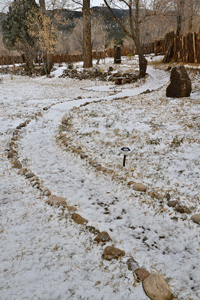 Empowered with the tools for mindful investigation, we observe again and again that pleasant experience is fleeting, ephemeral, fading quickly. Seeing this impermanence undermines our attachment, breaks up the demand we place on these things to fulfill us. Turning toward dukkha begins to unmask the problem of wanting to get a better experience. We begin to feel more and more independent of all that seeking and grasping. As that independence grows we recognize it as equipoise. This peace of mind is a real treasure for us. It is a reliable source of happiness and strength.
Empowered with the tools for mindful investigation, we observe again and again that pleasant experience is fleeting, ephemeral, fading quickly. Seeing this impermanence undermines our attachment, breaks up the demand we place on these things to fulfill us. Turning toward dukkha begins to unmask the problem of wanting to get a better experience. We begin to feel more and more independent of all that seeking and grasping. As that independence grows we recognize it as equipoise. This peace of mind is a real treasure for us. It is a reliable source of happiness and strength.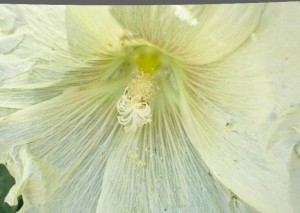 In June 2009 Sayadaw Vivekananda gave a talk on the first part of the Metta Sutta where the Buddha lists 14 Qualities a person should possess who wishes to attain the state of peace. Below is an excerpt from that talk on the quality of gentleness of mind.
In June 2009 Sayadaw Vivekananda gave a talk on the first part of the Metta Sutta where the Buddha lists 14 Qualities a person should possess who wishes to attain the state of peace. Below is an excerpt from that talk on the quality of gentleness of mind.
 w does it sit in your heart? Often we see renunciation as a kind of self-inflicted punishment. We mistakenly think renunciation means that we will no longer enjoy anything, that our lives will become a gray, bland, dullness. At best we might regard it as something that might be good for us – like bad-tasting medicine. If we really look at our practice, we’ll see that as we bring mindfulness to our unfolding experience, we are exploring the landscape of renunciation, learning, moment by moment to let go. As Ajahn Sumedho says: “The way of spiritual life is a movement away from the distraction of attaining or acquiring. It is a relinquishing, a letting go. It simplifies our lives, freeing us from that which is unnecessary. There’s no judgment or rejection, it is pure mindfulness developing in the present moment – the only place truth can be found.”
w does it sit in your heart? Often we see renunciation as a kind of self-inflicted punishment. We mistakenly think renunciation means that we will no longer enjoy anything, that our lives will become a gray, bland, dullness. At best we might regard it as something that might be good for us – like bad-tasting medicine. If we really look at our practice, we’ll see that as we bring mindfulness to our unfolding experience, we are exploring the landscape of renunciation, learning, moment by moment to let go. As Ajahn Sumedho says: “The way of spiritual life is a movement away from the distraction of attaining or acquiring. It is a relinquishing, a letting go. It simplifies our lives, freeing us from that which is unnecessary. There’s no judgment or rejection, it is pure mindfulness developing in the present moment – the only place truth can be found.” e to one of lack. Instead as Bhikkhu Bodhi says: ” It is to pass from gross, entangling pleasures to an exalted happiness and peace, from a condition of servitude to one of self-mastery. Desire ultimately breeds fear and sorrow, but renunciation gives fearlessness and joy.” This is quite a powerful statement – that renunciation might actually lead us to fearlessness and joy! Who wouldn’t want to make that kind of trade? Renunciation is seen as so important in this tradition because it is held as the very practice of freedom. Rather than being presented as something dismal or bleak, renunciation is seen & described as a practice of joy and happiness and its ultimate fruition is the greatest happiness, that of peace.
e to one of lack. Instead as Bhikkhu Bodhi says: ” It is to pass from gross, entangling pleasures to an exalted happiness and peace, from a condition of servitude to one of self-mastery. Desire ultimately breeds fear and sorrow, but renunciation gives fearlessness and joy.” This is quite a powerful statement – that renunciation might actually lead us to fearlessness and joy! Who wouldn’t want to make that kind of trade? Renunciation is seen as so important in this tradition because it is held as the very practice of freedom. Rather than being presented as something dismal or bleak, renunciation is seen & described as a practice of joy and happiness and its ultimate fruition is the greatest happiness, that of peace. In mindfulness practice, we often notice the particulars of an experience that we are observing, and we may not consciously recognize that beautiful mental qualities such as kindness and balance of mind are being cultivated. The practice of mindfulness cultivates a non-reactive attention to whatever happens to us, be it pleasant, unpleasant or neutral. When our minds are neither for nor against experience, there can be a natural openness, curiosity, and a kind and balanced attention that meet any experience. Recognizing that these beautiful mental qualities are present actually further supports their cultivation.
In mindfulness practice, we often notice the particulars of an experience that we are observing, and we may not consciously recognize that beautiful mental qualities such as kindness and balance of mind are being cultivated. The practice of mindfulness cultivates a non-reactive attention to whatever happens to us, be it pleasant, unpleasant or neutral. When our minds are neither for nor against experience, there can be a natural openness, curiosity, and a kind and balanced attention that meet any experience. Recognizing that these beautiful mental qualities are present actually further supports their cultivation.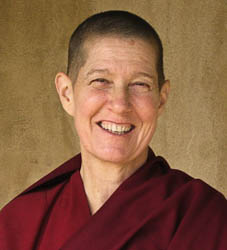 The very starting point of spiritual practice is empathy, sensing the pain and vulnerability of others. We have a stunning insight that we can cause harm and that it is extremely important for us to bring our aggression under control. The moment we become willing to sacrifice something of ourselves for the comfort and safety of others, we become “a person who can be tamed by Dharma practice.” Consider this: our resolve to refrain from harming is the urge to gain mastery over our minds and the determination to tame impulsive, destructive moods. What a powerful karmic moment this is! From this intention arises our ethical discipline. When we feel pushed to react negatively it is a signal that we must take hold of something inwardly to check that harmful urge.
The very starting point of spiritual practice is empathy, sensing the pain and vulnerability of others. We have a stunning insight that we can cause harm and that it is extremely important for us to bring our aggression under control. The moment we become willing to sacrifice something of ourselves for the comfort and safety of others, we become “a person who can be tamed by Dharma practice.” Consider this: our resolve to refrain from harming is the urge to gain mastery over our minds and the determination to tame impulsive, destructive moods. What a powerful karmic moment this is! From this intention arises our ethical discipline. When we feel pushed to react negatively it is a signal that we must take hold of something inwardly to check that harmful urge.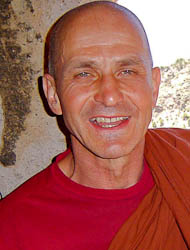 “Conquer the angry by loving-kindness; conquer the wicked by
“Conquer the angry by loving-kindness; conquer the wicked by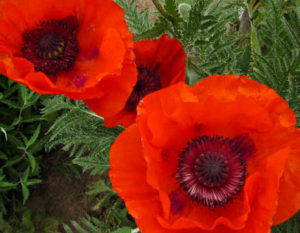 turning red, and sweat forming.
turning red, and sweat forming.